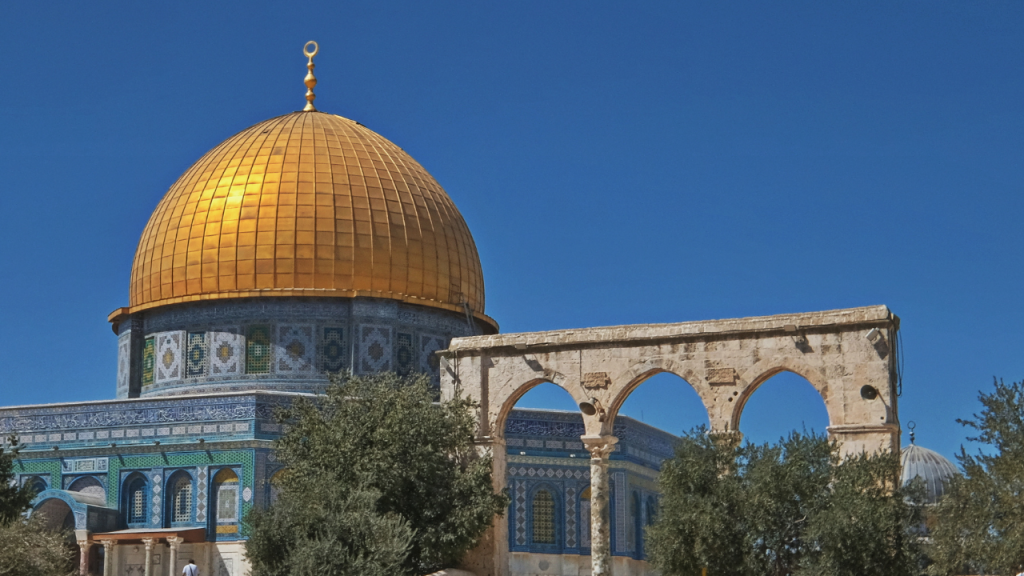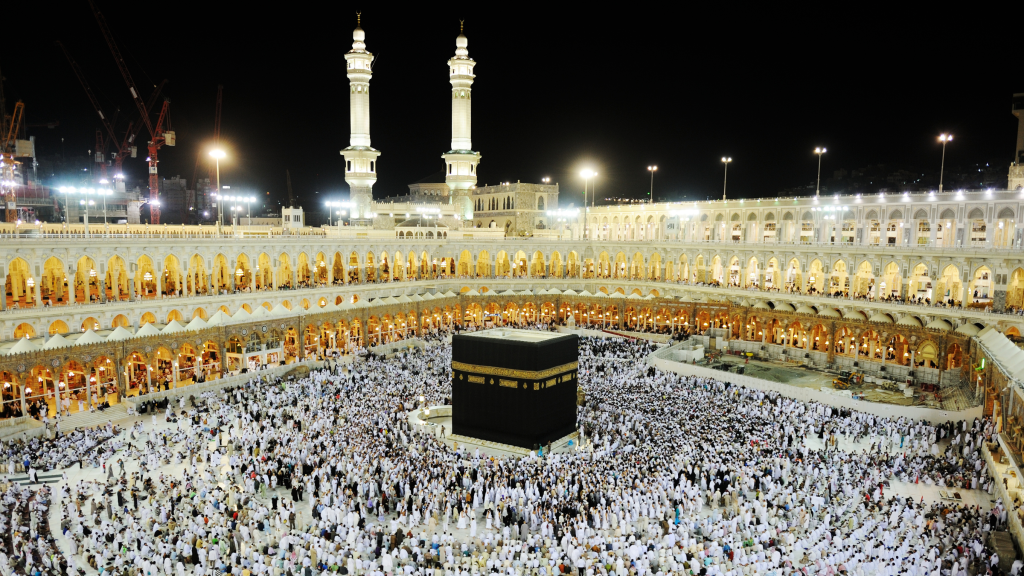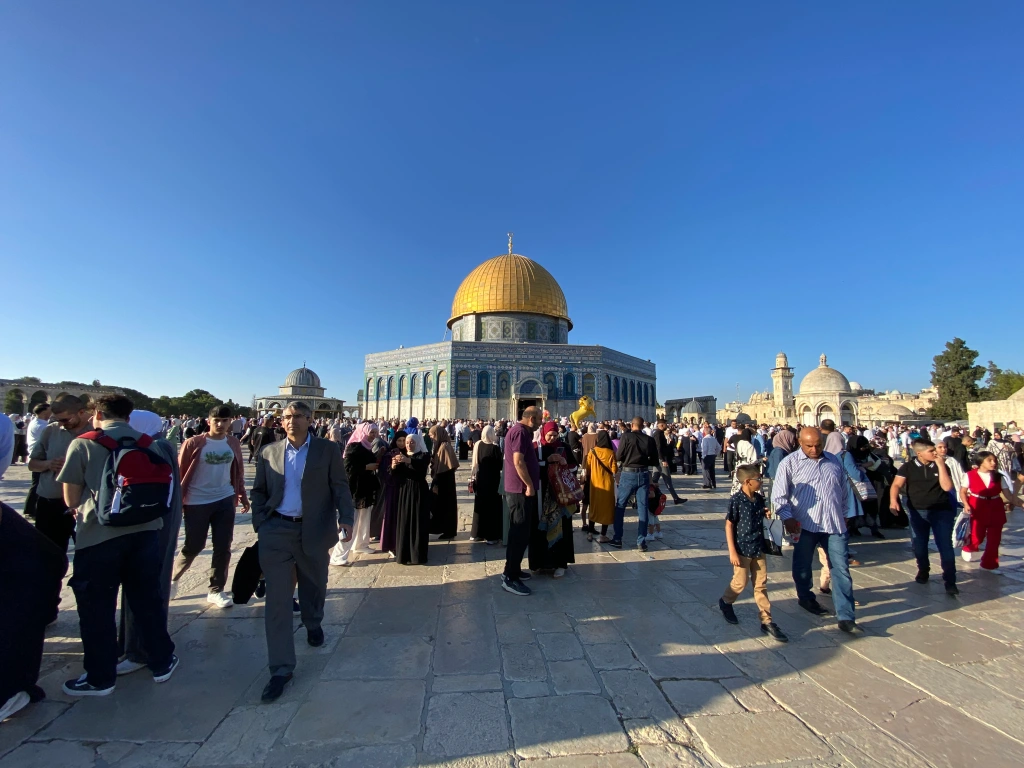Muslims and mosques in Cyprus? I would have never assumed that either of the two ever existed on this Island. Indeed Muslims did make their way far and wide around the globe with a mission; hoping to not only make a symbolic gesture to return to the inevitable truth of one God, but also to remind people that there is a way out of every dark corner through adopting this way of life. Islam was never only a religion or a set of prescriptions and instructions. It was a complete way of life for those who accepted it. It’s message was and still is clear and twofold; to humbly believe in one God and accept the Prophet Muhammad (peace be upon him) as the final Messenger of God. That’s it. We are then taught how to manifest this belief in our lives through the Quran and Sunnah.
The divine message travelled with Muslims eastwards towards China and westwards towards South America. Many people became Muslims along the way and became a part of this phenomena to “pay it forward” and go on to travel and inform others about this way of life. From its origins in Makkah, Saudi Arabia, the message also travelled with its messengers upwards towards Turkey, Eastern Europe and Russia. One such person who travelled alongside others towards Cyprus was the foster mother of the Prophet Muhammad (peace be upon him); Umm Haram. She alongside many other companions of the Prophet Muhammad (peace be upon him) had unyielding belief that the universal message can travel as far as humans can. Therefore, she set off with her companions towards Cyprus. Whilst in Cyprus, Umm Haram on one particular day was out riding her mule when suddenly it made a slip which caused her to fall off and immediately die on this very spot. Soon after, the companions buried her in the very spot she died. This spot is where the renowned Hala Sultan Tekke is. Today, visitors from around the world come not only to admire the beautiful ornamental architecture of this Mosque, but also to pay their visits to this once noble yet courageous woman.

We visited this Mosque in August 2018 and almost immediately became curious to find out more about the early Muslims that once set foot on this Island. Muslims from the 6th Century have visited this Island but it only started to become filled with Muslims since the Ottoman Conquest in 1571.
Cyprus faced a somewhat declining Venetian Rule before this, leaving the inhabitants desperate for fair rule and justice. Thus the Ottomans stepped in and conquered Cyprus in the 16th Century. Almost immediately thereafter, they started building Mosques and Madrasas (educational establishments) to cater for the many Turkish Muslims that started pouring in from South Turkey. The original inhabitants, the Greek Cypriot Christians, welcomed them and both Turkish Muslims and Greek Cypriot Christians lived side by side for many centuries in harmony.
The Ottomans ruled Cyprus from 1571 – 1878 which gave them over 300 years to influence the place significantly and leave behind a large Muslim population equalling to one-fifth of the entire population. Because of the rising population from the conquest, more mosques starting to make their appearance. To date, there are over 160 Mosques around the Island of Cyprus which speaks for itself when it comes to realising how many Muslims lived on the Island. Mosques have always been an important part of a Muslim community and also an integral part of the heritage of the Island.
There are two types of Mosques in Cyprus:
- Churches converted into Mosques – as Mosques were needed immediately, certain churches were converted into Mosques with minarets added to them. A good number of these Mosques still stand with gothic architecture.
- New Mosques – new mosques were built over a longer period of time and are normally found in urban areas.


Cyprus is split into two parts;
- The Republic of Cyprus (South Cyprus)
- Turkish Republic (North Cyprus)
Before the split in 1974 by the Turkish invasion, Muslims and Christians all lived in various areas around Cyprus. However, after the Turkish invasion, Christians resorted to the south of the island whilst the Muslims moved to the north of the island. There is now a border between these two parts which is placed almost exactly in the middle of the island.

When the Muslims of Cyprus moved towards the North of Cyprus, many of the Mosques which they used as their religious space became abandoned. In the North of Cyprus, many of the Mosques are still open and well maintained. Whilst we spent most of our time driving around the south part of the Island with our hired car, we located many mosques that have been left abandoned by the Muslim population from 1974. These mosques are for the mostly permanently closed. Judging from face value it did not seem that they were being maintained. Our hired car unfortunately was not permitted to be taken over to the North of the island due to certain governmental restrictions. We therefore only visited a few mosques in North Cyprus by foot.
What’s intriguing though, is the sheer amount of Mosques we drove past when we were in South Cyprus; it gave us a glimpse of what it may have been like 100 years ago when the Muslims and Christians lived together and respected and tolerated each others’ beliefs.
What was also fascinating, is the intermarriage of cultures, civilisations and architectural designs of the mosques. It is something that can be seen throughout the Island with the naked eye. The people of Cyprus have always revered the religion of Islam and that can be attested by the freedom Muslims have in practising their religion. One such example is the Muezzin’s call to prayer which was rife throughout the Island prior to 1974, however this still occurs throughout all of North Cyprus.
People around the world ought to know about the relationship and harmony that existed on this island as well as about the eccentric and abandoned mosques that remain today. Some buildings come and go, but these Mosques still stand today with the Cypriot government intending to invest in their maintenance in the near future. People around the Island that we met were extremely pleased to meet us and guided us towards a number of abandoned mosques. Walking and driving around the island gave me a strong perceived glimpse of how life was like for the Muslims that once lived here. Even though they may not live in South Cyprus anymore, their religious buildings still stand today and that should be an incentive for encouraging and reinvigorating religious tourism to several areas on the island. To corroborate that, a core message of the Qur’an encourages one to traverse the earth and visit certain places to learn and experience history as it makes one realise two things; the result of the people of the past and what good (or bad) they did so that we can either adopt or refrain from such ways.
Nicosia
This is the capital city of Cyprus; one half of it belongs to the Turkish Republic with the other half belonging to the Republic of Cyprus. There are Mosques in both parts of the city which are open to the public. The most iconic Mosque in the Turkish part of Nicosia is the Agia Sophia Gothic Cathedral converted into Selimiye Mosque. Many mosques in Nicosia were converted from cathedrals whilst a fair amount of them were newly built.




There are Mosques which were built by the Ottomans in Peristerona and Dali also which are both villages in the Nicosia district. The mosque in Peristerona was built next to a church. As a consequence, both the images of a mosque and church were used in stamps in the British period to show coexistence between the Greeks and the Turkish.
Lemesos (Limassol)
There are around 30 mosques in the district of Limassol with the Great Mosque [Djami Kebir] being the most significant. Some are within the city whilst some stand in nearby villages.



Larnaca
Larnaca has some of the oldest mosques in Cyprus, with every one that we visited being permanently closed. This is the city in which Umm Haram RA passed away. She was buried in the Hala Sultan Tekke Mosque which is located near the west bank of Larnaca Salt Lake.


Tuzla Mosque is one of the oldest mosques in Larnaka, Cyprus, and dates back to Byzantine times. The mosque was originally a Byzantine Orthodox Church, as can be seen by the frescoes inside. In the 12th or 13th century it became the Catholic Church of the Holy Cross and was converted into a mosque after the Ottoman occupation of 1571.

Klavdia Mosque – formerly known as The Holy Church of Agia Aikaterini in Klavdia, Larnaca, Cyprus. This church was built in a Byzantine style in the 14th century. During the Ottoman period, when the Christian settlers of the village moved to other villages for safety, the church had been transformed into a mosque.
It was quite difficult to locate this Mosque. Whilst trying to find it, we parked our car near the house of a local and asked a man for directions. He was very polite and friendly and showed us the way. As I was heading back to the car, his daughter approached us and made sure that we knew where we were going. The village this mosque is located in is very calm and has a very relaxed atmosphere.

The mosque in the village of Kofinou, Larnaca, Cyprus is a spacious mosque with an exceptionally tall minaret. It was built around 1960s making it one of the newest mosques on the island.

Found in the Muslim Turkish Cypriot part of the village on the east shore of the Kseropotamos river, lies a Turkish school that has been transformed into a mosque.
The mosque has received very little maintenance since the Muslims left it in 1974.
What Next…
There are many more Mosques that are either still open or left abandoned on this small island. Hopefully the above accounts should give you an idea. It was both sad and fascinating at the same time seeing all these Mosques around the island. Sad because of its abandonment and fascinating because they are still standing till today. There is still hope that the government will be investing money into these abandoned mosques so that their doors can open for the public as well as to invite visitors from around the world for religious tourism. The memories of the invasion are still ripe for the Cypriots and the Turkish and both parties hope to see the mend of what was once a great relationship in the near future. Through visiting this island and the mosques, we can hope to ignite a spark which could hopefully result in a more hopeful future, InshaAllah.




![Best SIM Card To Buy For Your Umrah Trip [2024]](https://muslimsgotravel.files.wordpress.com/2024/02/untitled-design-2024-02-24t215000.415.png?w=1024)
Leave a reply to Juber Ahmed Cancel reply